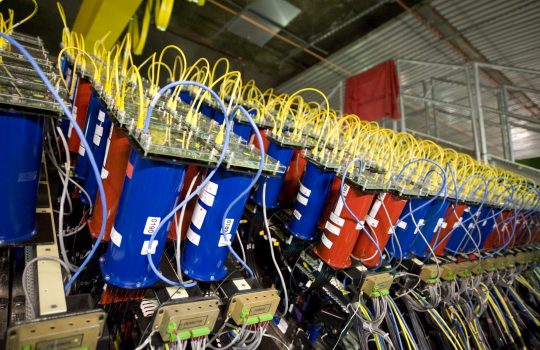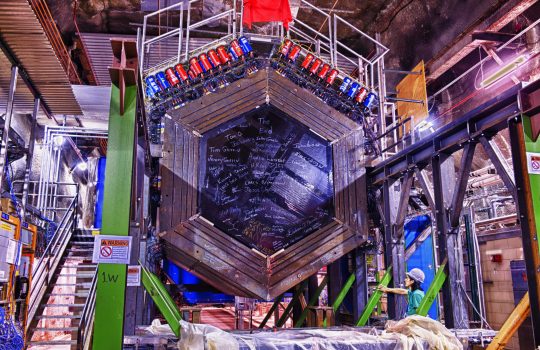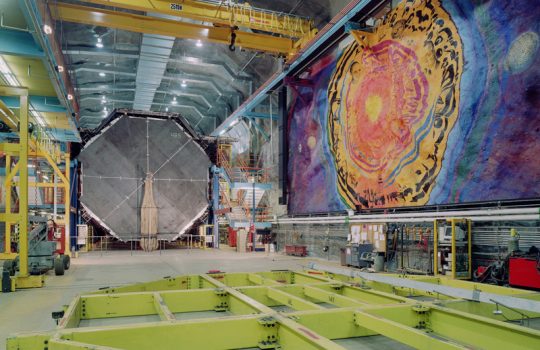Gotta catch ’em all: new NOvA results with neutrinos and antineutrinos
Fermilab’s NOvA neutrino experiment records in its giant particle detector the passage of slippery particles called neutrinos and their antimatter counterparts, antineutrinos. Famously elusive, these particles’ interactions are challenging to capture, requiring the steady accumulation of interaction data to be able to pin down their characteristics. With five years’ worth of data, NOvA is adding to scientists’ understanding of neutrinos’ mass and oscillation behavior.




